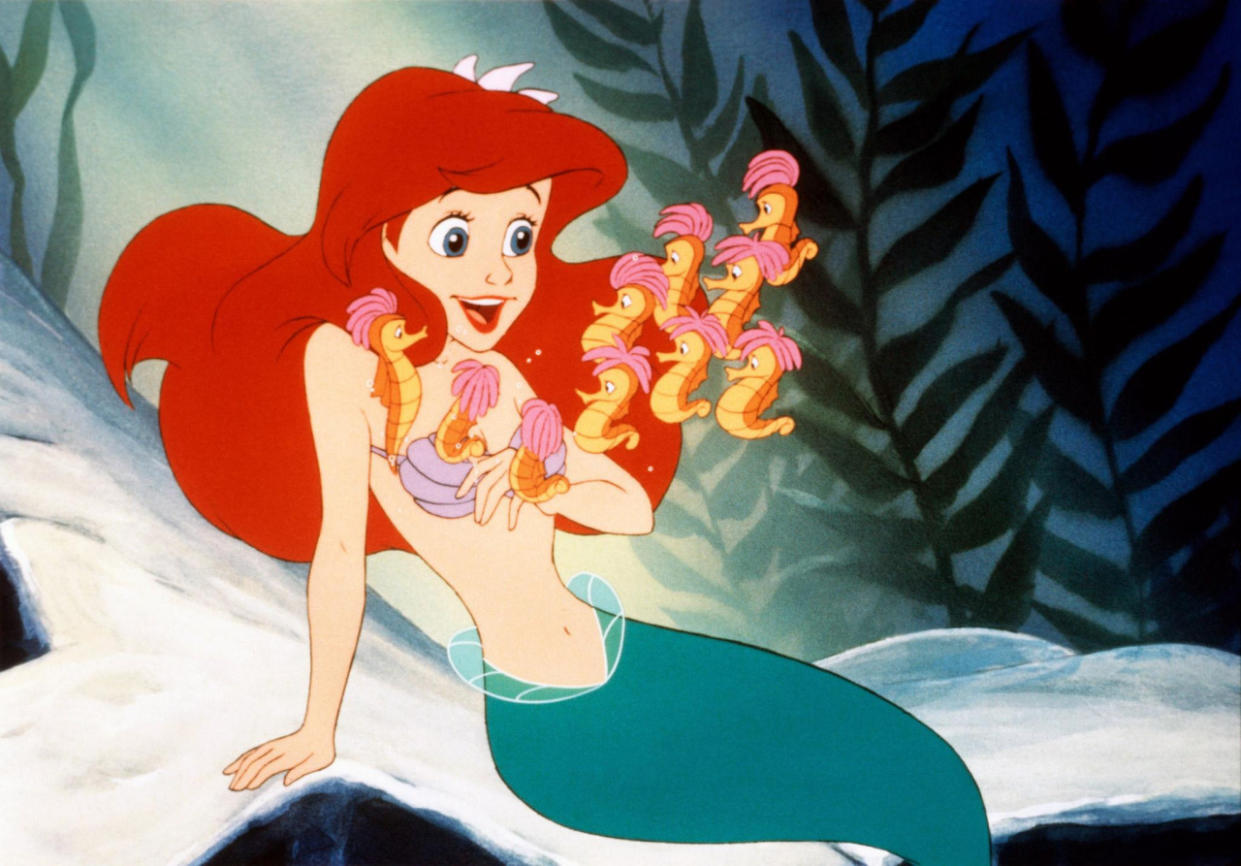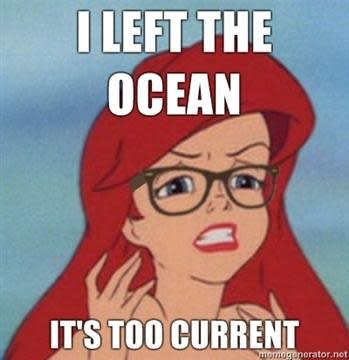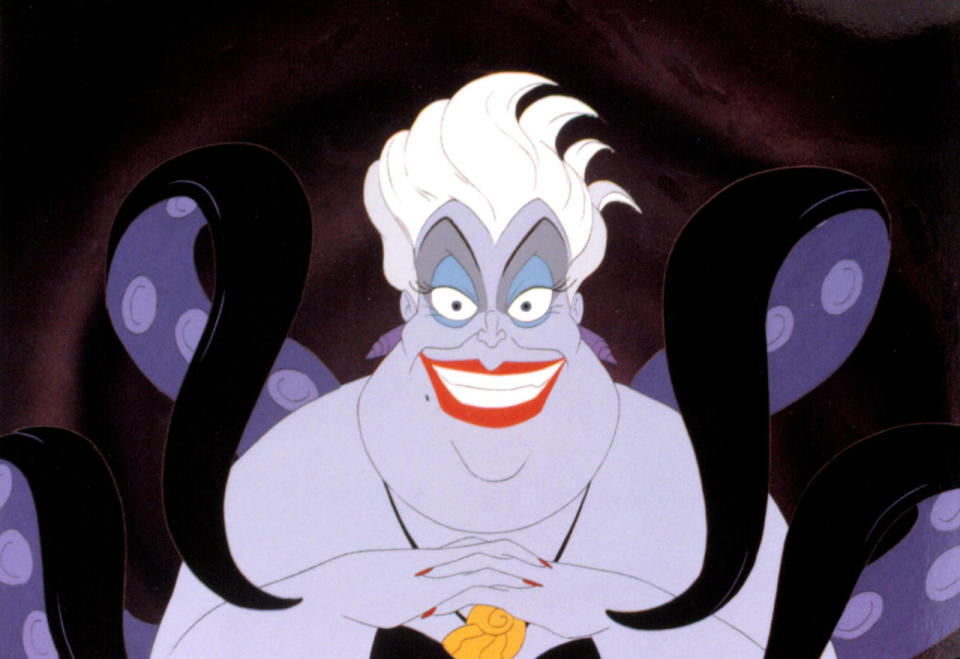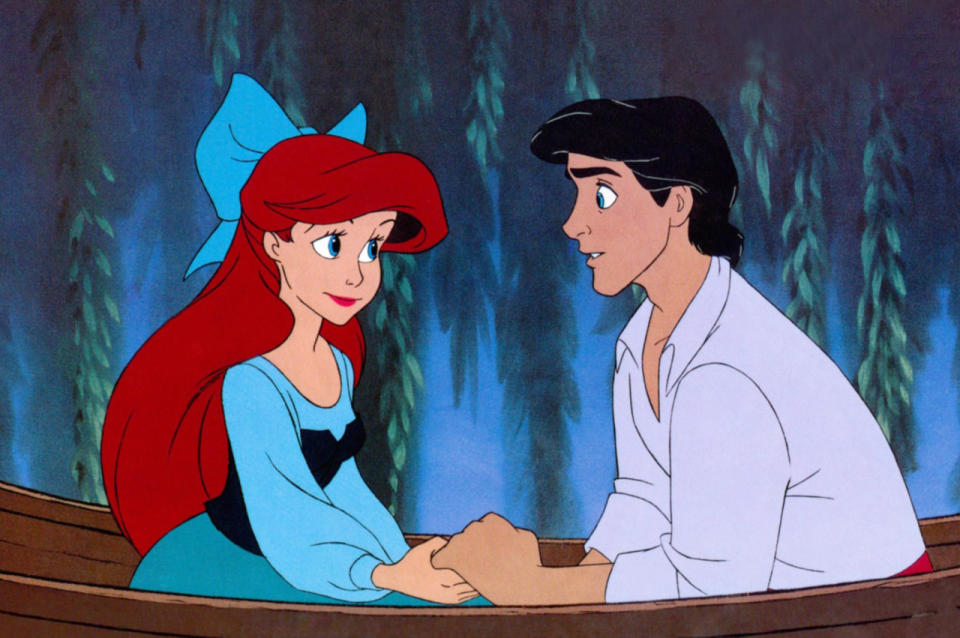It's Time to See 'The Little Mermaid' as a Feminist Film

Ariel in ‘The Little Mermaid’
When The Little Mermaid came out in 1989, its aquatic heroine Ariel struck a chord like no Disney princess before her. Thousands of girls fell in love with the movie, only to realize, as they entered their teens, 20s, and 30s, that The Little Mermaid is — in the words of one Feministing contributor — “a feminist’s worst nightmare.” After all, this is a film about a girl who literally loses her voice and signs away her soul for the love of a man she’s never met. Worse, Ariel never gets to be a hero; it’s her beloved Prince Eric who kills the villain and her father, King Triton, who ultimately grants her happily-ever-after wish to be human.
And yet the fascination with Ariel persists, particularly among the Gen-X and millennial women who made up her original audience. The soggy redhead is the only pre-Frozen Disney princess to inspire her own popular meme, Little Hipster Mermaid. Rihanna channeled Ariel’s look for Vogue, and brushed her hair with a fork on Instagram. Such empowered ladies as Reese Witherspoon, Tina Fey, and Anna Kendrick have played Ariel in separate Saturday Night Live sketches. Sofia Coppola inspired squeals of online glee with the news that she would be directing a live-action Little Mermaid movie — which, though unconnected with the Disney film, seems designed to evoke a comparison.

One of the Little Hipster Mermaids
I was 9 when the movie came out, and many of my 30-something friends still love The Little Mermaid, even if they’re conflicted about showing it to their daughters.This generational attachment to the film is so stubborn that two media studies professors, Erica Scharrer from the University of Massachusetts and Chyng Feng Sun from New York University, have actually studied it, penning a 2004 paper titled “Staying True to Disney: College Students’ Resistance to Criticism of The Little Mermaid.” What the professors found was that extensive critical analysis and study didn’t tarnish Little Mermaid in the eyes of college students. “You could say, she gave up her voice to be with the prince. Or you could say, she gave up her voice as an expression of agency, of independence from her underwater life,” Dr. Scharrer tells Yahoo Movies. “I think that is a reading that is absolutely available to members of the audience.”
All of these well-informed women can’t be wrong for loving Ariel. Twenty-five years after its premiere, in the age of “Let It Go” and Katniss Everdeen, it’s time to start looking at Disney’s little mermaid as a feminist heroine.
First of all, it’s important to note that Ariel was considered, at the time of the movie’s release, a fairly empowered character. Ariel is a restless undersea princess and the youngest daughter of King Triton. Her only friends are a crab named Sebastian and a tropical fish (not a flounder, oddly) named Flounder. She longs to explore the forbidden world above the ocean, and satisfies her curiosity by collecting artifacts from shipwrecks. Then Ariel falls in love-at-first-sight with a human, Prince Eric, and rescues him from a burning ship. This drives her father into a rage, so Ariel turns to the one person who offers her a real chance to live in the human world: Ursula the Sea Witch, who gives Ariel a human body in exchange for her lovely voice. The catch: If the prince doesn’t kiss Ariel within three days, Ursula gets to imprison her soul forever. The Atlantic writer Lenika Cruz notes that Roger Ebert called Ariel “a fully realized female character who thinks and acts independently.” Or, in the words of my friend Shiraz, “the first Disney princess who had enough agency to go make a terrible deal to get the stupid thing she wanted.”

Ursula the Sea Witch entices Ariel into a devil’s bargain
Compared with Cinderella, Sleeping Beauty, and Snow White, who pine away for love until magic spells and handsome princes intervene, Ariel is a firebrand. She’s an unapologetic rebel with her own feelings and desires, which she articulates in one of Disney’s all-time greatest character songs, “Part of Your World.” In 1989, girls raised on classic Disney films had never seen an animated princess who spoke so directly to them. Literally, even: ”Part of Your World” is delivered directly to the camera, not to the usual peanut gallery of woodland creatures. As my friend Lisa says of her childhood Little Mermaid obsession, “Ariel is strong-willed, sings a lot, and is a mermaid. It was love at first 6-year-old sight.”
Watch Ariel sing her signature ballad:
For all her spunk and stubbornness, however, Ariel is still the girl who gets her man by sacrificing a key part of her identity: her voice. The same princess who starts out the film exploring shipwrecks and belting about her dreams, ends up in a wedding dress, whispering “I love you, Daddy” to King Triton. It’s a discouraging trajectory, and it’s not hard to pull out moments in the film that are downright horrifying to feminist sensibilities, like this lyric in Sebastian’s song “Kiss the Girl” (cited by my friend Morgan, the father of a 4-year-old girl): “Yes, you know you want her/ Look at her, you know you do/ It’s possible she wants you, too/ There is one way to ask her/ It don’t take a word/ Not a single word/ Go on and kiss the girl.” That’s basically “Blurred Lines,” as sung by a crustacean.
Watch Sebastian sing “Kiss the Girl:”
There’s little doubt that Ariel’s crush on Prince Eric strengthens her resolve to be part of the human world. But crucially, her love of “the world above” is established long before she sets eyes on the prince. Her sacrifice, then, doesn’t have to be seen as throwing everything away for a man: It’s an extreme measure to get what she has always wanted, a life on the land. Ariel’s behavior in her voiceless human days would seem to support this theory. Instead of throwing herself at Eric’s feet — which, arguably, would be a more practical idea, since his kiss could free her from Ursula’s evil contract — she spends that precious time reveling in the human world, wiggling her new toes, sleeping in a bed, and taking the reins of a horse-drawn carriage.
Furthermore, while Ursula assures Ariel that human men prefer their women to be silent, the opposite proves to be true: Only when Eric finally hears Ariel’s voice does he realize that he loves her. The film is often criticized for rewarding Ariel’s sacrifice, but even a little girl can see that Ariel is getting a raw deal by trading her voice for legs. “I love that she’s a mermaid,” my friend’s 6-year-old daughter Lucy said when I asked why she loves Ariel. Anything else? “No. Just that she’s a mermaid.”
Why would Ariel want to leave the ocean after the “Under the Sea” scene:
Maybe, then, your view of The Little Mermaid depends on whether you see it as a love story, or a story about a girl figuring out who she really is. The second interpretation is why author Rhiannon Thomas considers The Little Mermaid “a kickass feminist movie.” "Ariel doesn’t long for romance,“ she writes on her blog Feminist Fiction. “Ariel longs to experience a different world.” Illustrator Karen Hallion, whose popular fan art includes Little Mermaid homages, tells Yahoo Movies that Ariel actually inspired her to become an artist. “It’s about having a dream, a goal, that maybe not everyone is going to understand, or approve of,” she says of the film. “For me, deciding to pursue art almost out of the blue, The Little Mermaid was pivotal and inspiring.”
Full disclosure: The Little Mermaid was never my favorite Disney film. As one of those kids who were very attached to inanimate objects (I never lost a single Star Wars toy accessory), I was devastated by the scene in which King Triton destroys Ariel’s collection of human treasures. Rewatching the film as an adult, however, I was struck by how Ariel’s journey instantly made me feel like a girl again. It wasn’t purely nostalgia, either; it was the character’s deep sense of yearning, of wanting to be part of an adult world she didn’t entirely understand.

Ariel with her beloved Prince Eric
Which brings me to my own modest feminist interpretation of The Little Mermaid: The whole movie is an analogy for girlhood. Like Ariel, girls approaching adulthood have very little agency of our own. We’re told not to try new things or experiment too much, because the world is a dangerous place. So we invest in signifiers and “safe” fantasies, like Ariel’s collection of waterlogged corkscrews, or posters of teen idols. Then comes the day when we feel the need to break free and discover our own identity, apart from the world we’ve always known. It’s not unusual for that realization to go hand-in-hand with that first, all-consuming crush. But breaking away isn’t that easy. A girl meets resistance from the King Tritons, who tell her that the adult world will eat her alive. Or she is led astray by the Ursulas, who tell her that her only value lies in her body and her appeal to men. Ultimately, it’s up to her to discover and reclaim her own voice, to join the “bright young women, sick of swimming, ready to stand” — a lyric of Ariel’s that still sends an energizing shiver down my spine.
Yes, Ariel makes a terrible bargain. But there’s nothing un-feminist about wanting more; it is, in fact, what feminism is all about. In The Little Mermaid, Ariel goes to great extremes to realize her dream, consequences be damned. In doing so, she set a template for every Disney princess that followed: No longer would any of them be content to sit idly in a castle. Belle has Ariel to thank for her library, as does Tiana for her restaurant, and Rapunzel for her life outside the tower walls. Ariel wanted to be the heroine of her own story, but didn’t quite get there. Lucky for us, the princesses who followed in her footsteps did.
Photo credits: Everett

